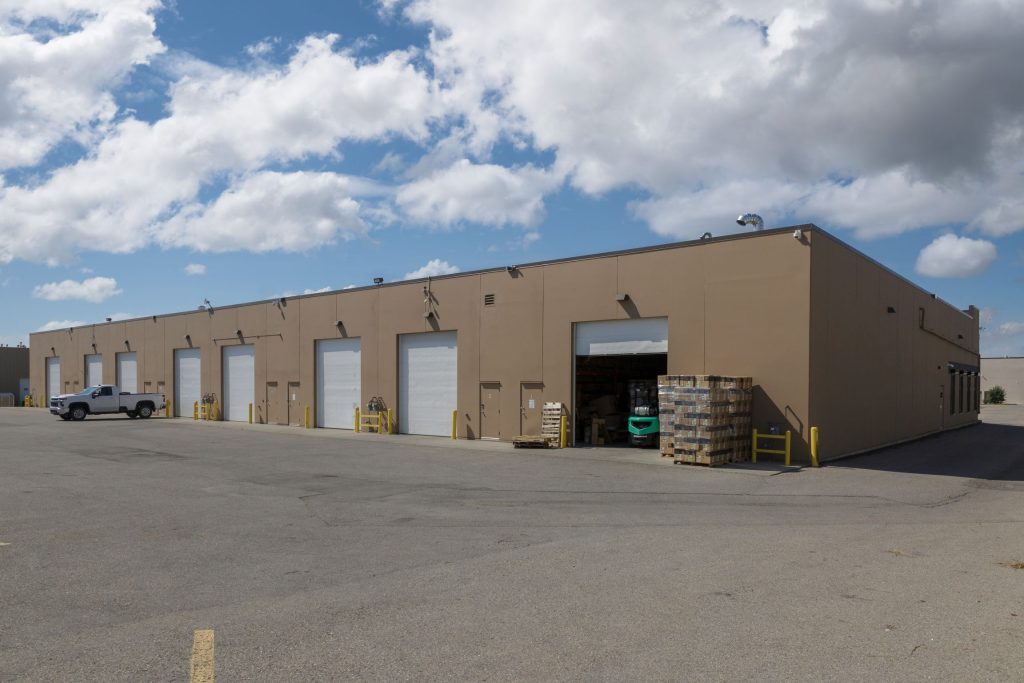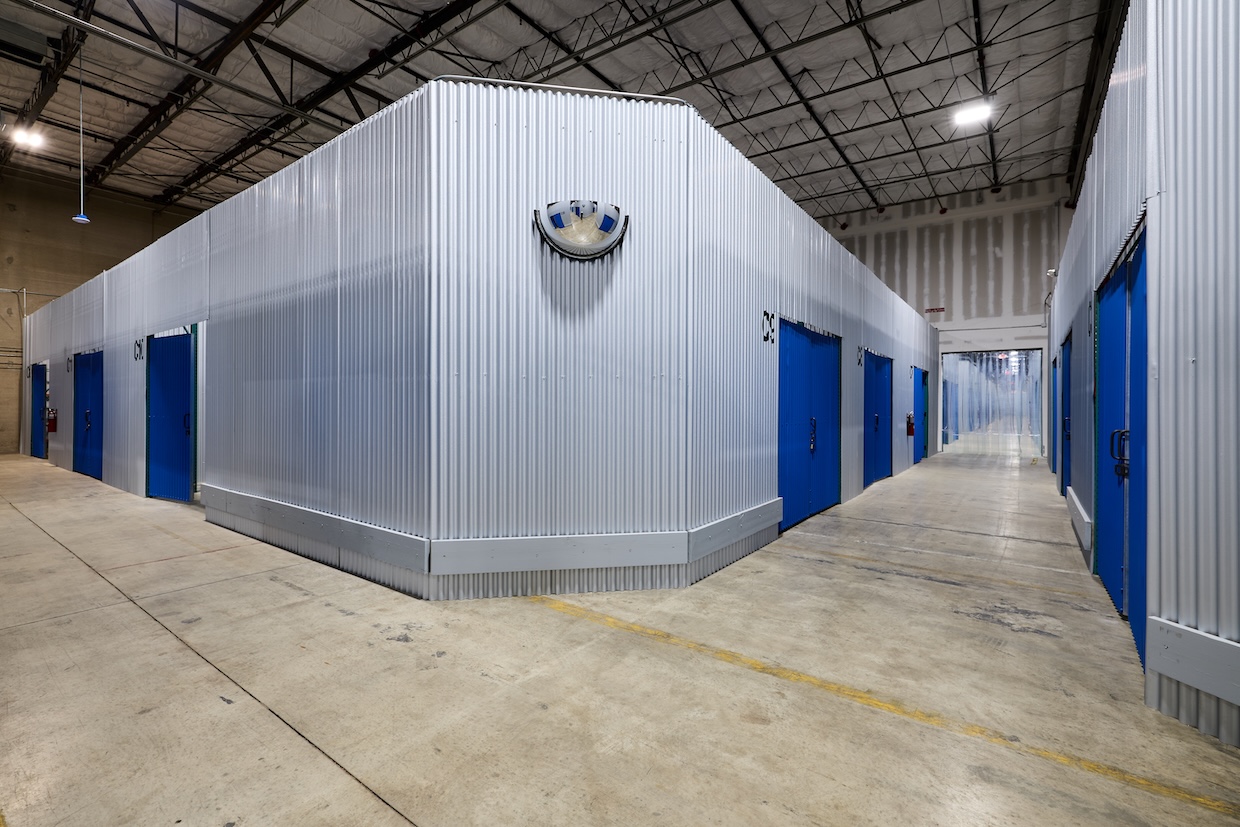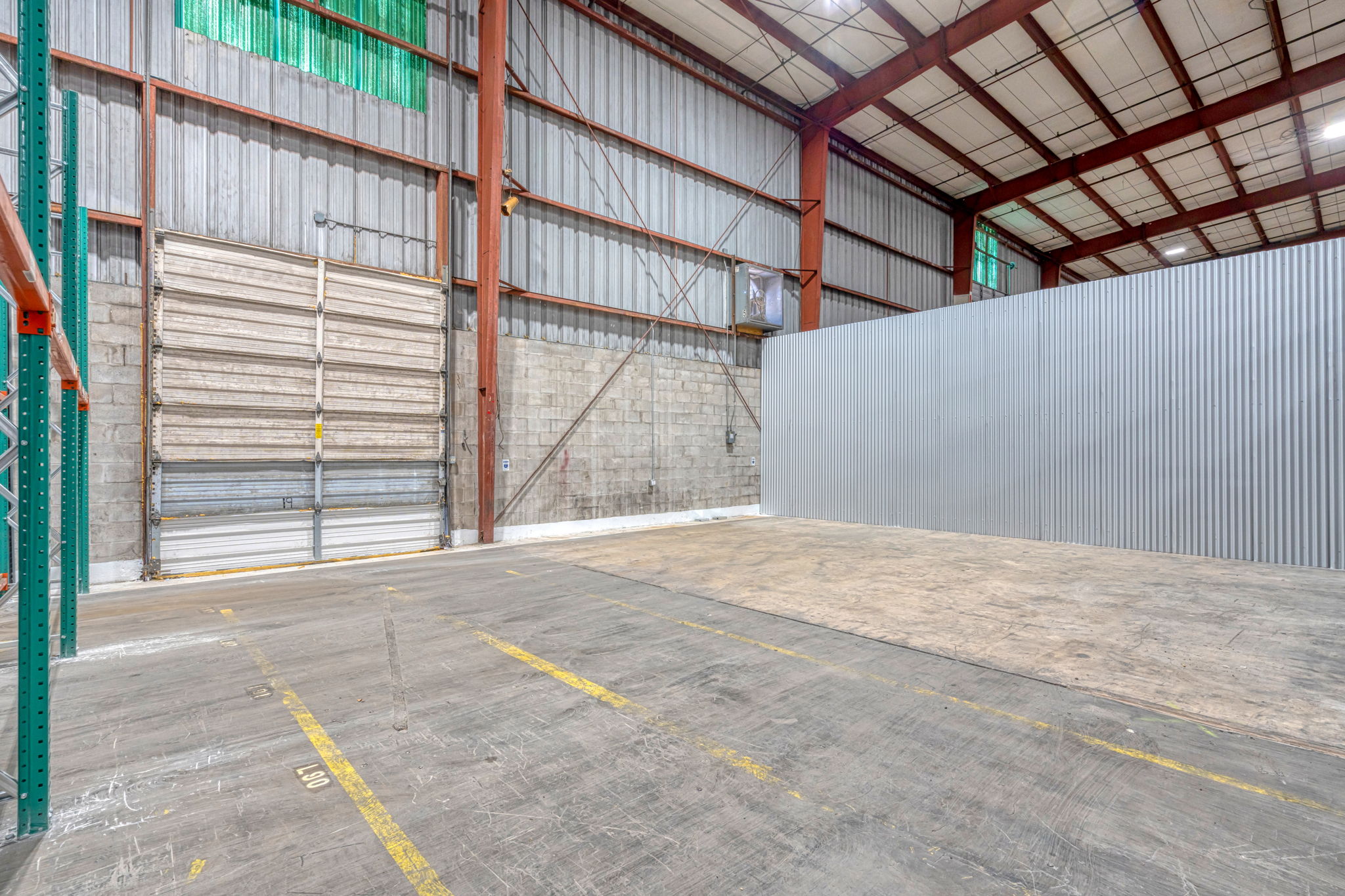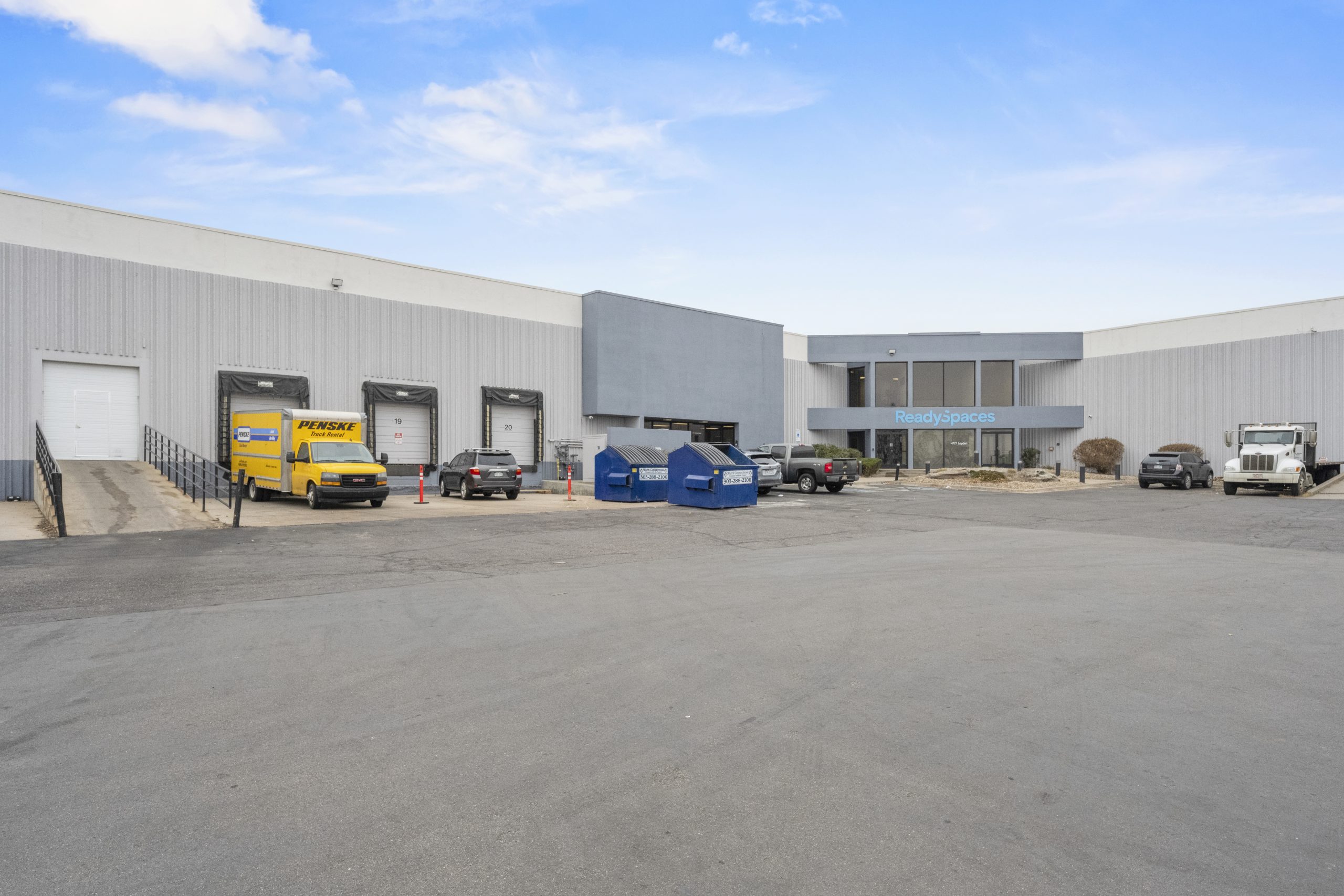Calgary Warehouse Market Report 2025: Where Trade Uncertainty Masks Western Canada’s Tightest Industrial Market
Calgary’s warehouse market presents the ultimate contrarian opportunity: headlines scream tariff uncertainty and U.S. trade tensions, while the underlying fundamentals tell a story of structural undersupply. The overall vacancy rate sits at 3.8-5.1%, normalizing from 2023’s ultra-tight 2.6% but still well below a healthy equilibrium. Small bay warehouse vacancy rates have dropped 45% over the past three years. Construction activity runs 76% below the five-year average. Calgary added 100,000 residents in 2024 alone, representing a 6% population growth rate that ranks among the highest in North America. The trade uncertainty narrative creates the opportunity; the supply-demand fundamentals create the returns. Western Canada’s tightest industrial market is hiding in plain sight.

FACT BOX: Calgary Warehouse Market Snapshot
- Overall Vacancy Rate: 3.8-5.1% (Q2-Q3 2025)
- 2023 Historic Low: 2.6% vacancy (ultra-tight peak)
- Average Rental Rate: $10.90 CAD/SF NNN (+2-12% YoY)
- Small Bay Vacancy Change: Down 45% over 3 years
- Under Construction: 1.2 million SF (76% below 5-year average)
- 2024 Population Growth: 100,000+ residents (6% increase)
- Industrial vs. Office: Industrial vacancy 3.8-5.1% vs. Office 30%+
- Owner-User Market: Strong competition for quality existing buildings
Current Market Conditions: Normalizing From Ultra-Tight, Still Structurally Short
Vacancy and Availability: The 2.6% Era Ends, Opportunity Emerges
Calgary warehouse vacancy climbed to 3.8-5.1% by Q3 2025, up from the ultra-tight 2.6% recorded in Q4 2023. This normalization reflects two factors: approximately 800,000 SF of new supply delivered in 2024, and modest absorption slowdown as some businesses delayed expansion amid U.S. trade policy uncertainty. However, context matters: a 3.8-5.1% vacancy rate still represents an exceptionally tight industrial market by any historical standard.
For perspective, Calgary’s industrial sector remains significantly healthier than its office sector, where vacancy rates exceed 30%. This divergence reflects Calgary’s economic diversification beyond energy, as logistics, e-commerce distribution, light manufacturing, and food processing have created more resilient industrial demand than white-collar office demand.
The South Calgary and Southeast Calgary submarkets maintain the tightest conditions, with modern warehouse properties (built post-2015) essentially fully leased. Older Class B and C industrial properties (25+ years old) absorb the majority of vacancies, as tenants increasingly prefer modern facilities with superior clear heights, energy efficiency, and truck courts.
Rental Rates: Divergence Between Product Classes
Calgary warehouse rental rates averaged $10.90 CAD per square foot NNN through Q3 2025, but this aggregate figure masks significant divergence between property classes:
- Class A (Modern, 28’+ Clear Height): $12-14 CAD/SF NNN (+8-12% YoY)
- Class B (Functional, 20-26′ Clear Height): $9-11 CAD/SF NNN (+2-5% YoY)
- Class C (Older, <20′ Clear Height): $7-9 CAD/SF NNN (-2 to +2% YoY)
The flight to quality driving office market disruption is equally present in Calgary’s industrial sector. Tenants increasingly recognize that modern warehouse facilities deliver operational efficiencies (lower heating costs, better truck access, improved material handling) that offset 20-30% higher rental rates. This dynamic supports continued rent growth for quality assets even as overall market vacancy normalizes.
Small bay warehouse properties (under 50,000 SF) command significant premiums over large bay comparables, with rents 15-25% higher due to persistent supply shortages in this segment.
Leasing Activity: Owner-Users and Small Bay Driving Demand
Calgary warehouse leasing activity reflects two dominant themes: strong owner-user purchasing activity and continued demand for small bay leasing.
Owner-User Market: Calgary’s owner-user warehouse market has rarely been more competitive. Businesses seeking to purchase industrial properties for their own use face multiple-offer scenarios for quality buildings. Interest rates remain elevated by 2015-2020 standards, but businesses increasingly recognize that locking in long-term occupancy costs provides protection against future rent escalations and vacancy risk.
Small bay owner-user properties (10,000-30,000 SF) in particular generate intense competition, with well-located buildings selling at $180-250 CAD/SF depending on age and condition. Buyers willing to accept older Class B/C properties in secondary locations can find better value at $120-160 CAD/SF.
Small Bay Leasing: Calgary’s small bay warehouse market (under 50,000 SF) has consistently tightened over the past three years, with vacancy dropping 45% from elevated 2022 levels. E-commerce fulfillment, service contractors, food distribution, and light manufacturing businesses all compete for limited small bay availability. Landlords maintain firm pricing and minimal concessions, reflecting supply-demand imbalance.
Development Pipeline: 76% Below Average, Future Shortage Inevitable
1.2 Million SF Under Construction, Dramatic Pullback
Calgary’s warehouse development pipeline contracted dramatically through 2024-2025, with only 1.2 million SF currently under construction. This represents a 76% decline below the five-year average construction volume, a pullback so severe that it virtually guarantees future supply shortages as existing inventory is absorbed.
The construction slowdown reflects multiple factors:
- Trade Policy Uncertainty: Developers are hesitant to launch speculative projects amid U.S. tariff discussions and cross-border trade tensions
- Development Economics: Construction costs rose 35-45% from 2020-2023, making pro forma returns challenging at current rental rates
- Financing Environment: Higher interest rates and more conservative lending standards are reducing development feasibility
Of the 1.2 million SF under construction, approximately 60% represents build-to-suit or pre-leased projects, minimizing speculative supply risk. The remaining 40% consists of smaller multi-tenant buildings (40,000-80,000 SF) in established industrial submarkets.
The 18-24 Month Supply Gap Approaching
The 18-24 month lag between construction starts and completions means Calgary’s development drought will create increasingly apparent supply shortages through 2026-2027. Assuming modest absorption of 2-3 million SF annually (well below Calgary’s historical 4-5 million SF average), the existing pipeline provides only 6-9 months of future supply.
Unless construction activity rebounds significantly in Q4 2025 and H1 2026—which appears unlikely given current economic and financing conditions Calgary faces potential vacancy compression toward the 2-3% range by late 2026. Markets experiencing vacancy below 3% typically see accelerated rent growth (10-15% annually) as landlords exercise maximum pricing power.
No Small Bay Construction: Three-Year Supply Drought
Calgary warehouse development has produced virtually zero small bay properties (under 50,000 SF) since 2022. The entire development pipeline consists of facilities exceeding 60,000 SF, leaving small bay tenants dependent on existing inventory and periodic sublease opportunities.
This three-year small bay supply drought compounds the segment’s tightness. With vacancy already down 45% over the past three years and no new supply forthcoming, small bay warehouse properties are well-positioned for continued rent appreciation of 8-12% annually through 2026-2027.
Trade Uncertainty: Short-Term Headwind, Long-Term Irrelevant
The Tariff Narrative vs. Structural Reality
U.S.-Canada trade policy uncertainty dominates Calgary headlines, with periodic discussions of tariffs, border adjustments, and supply chain reconfigurations creating business uncertainty. This narrative highlights Calgary’s industrial market, which receives less investor attention than comparably tight U.S. markets, creating a contrarian opportunity.
The structural reality: Calgary’s warehouse demand drivers are predominantly domestic. E-commerce fulfillment serving Alberta’s population, food processing and distribution, service contractor operations, and regional logistics all depend on Calgary’s position as Western Canada’s primary distribution hub—factors entirely independent of U.S. trade policy.
Cross-border trade certainly exists and matters to specific industrial tenants (manufacturers with U.S. customers, importers of U.S. goods), but these businesses represent a minority of Calgary’s industrial warehouse demand. The tariff uncertainty creates psychological headwinds without proportionate fundamental impact.
Population Growth: The Real Story
Calgary’s population growth tells a more important story than trade policy. The city added 100,000+ residents in 2024—a 6% single-year increase that ranks among North America’s highest. This growth creates compounding warehouse demand for:
- Consumer goods distribution (retail and e-commerce serving a growing population)
- Service contractor storage (HVAC, electrical, plumbing serving residential construction boom)
- Food processing and distribution (restaurants, grocery stores, institutional catering)
- Small business warehouse needs (general storage, light manufacturing, assembly operations)
Population growth of this magnitude translates to approximately 1.5-2.0 million SF of annual industrial warehouse demand purely from local consumption, independent of export-oriented industrial activity. This domestic demand base provides resilience against external trade shocks.
Small Bay Warehouse Opportunities: Western Canada’s Tightest Segment
45% Vacancy Reduction Over Three Years
Calgary’s small bay warehouse market (under 50,000 SF) experienced a 45% vacancy reduction from 2022 to 2025, transforming from a tenant-favorable environment to extreme landlord leverage. Current small bay vacancy sits at approximately 4-6% depending on submarket and property quality—functionally zero once you account for sublease listings, properties undergoing renovations, and facilities with functional obsolescence.
Well-located small bay properties with modern infrastructure (20’+ clear height, adequate truck access, reasonable proximity to major highways) are essentially fully leased. When vacancies occur, landlords typically receive multiple applications within days and select tenants based on their creditworthiness rather than through a competitive bidding process.
Premium Pricing, Minimal Concessions
Small bay warehouse tenants in Calgary face premium pricing with limited landlord flexibility. Typical small bay warehouse rental rates range from $11-15 CAD/SF NNN, depending on location, age, and functionality—a 15-25% premium over comparable large bay space.
Lease concessions are modest:
- Free Rent: 1-2 months for 3-5 year terms
- TI Allowances: $5-10 CAD/SF (minimal)
- Lease Terms: 3-5 years minimum (landlords prefer longer)
- Rent Escalations: 3-4% annual increases (non-negotiable)
Purchase Market Highly Competitive
Small bay warehouse purchase opportunities in Calgary generate intense competition among owner-users. Properties in the 10,000-30,000 SF range in primary industrial submarkets (Southeast Calgary, South Calgary, Foothills Industrial) command prices of $180-250 CAD/SF and frequently receive multiple offers above asking price.
Businesses willing to consider older Class B/C properties in secondary submarkets can find opportunities at $120-160 CAD/SF, though these facilities typically require capital investment for roof replacement, HVAC upgrades, or other deferred maintenance items.
The owner-user market’s competitiveness reflects several factors:
- Strong preference for locking in occupancy costs versus exposure to future rent escalations
- Limited new construction creates scarcity value
- Favorable depreciation treatment for Canadian-controlled private corporations
- Business owners seeking to build equity in real estate alongside operating businesses
Calgary vs. Alberta Secondary Markets: Competitive Dynamics
Red Deer and Edmonton Alternatives
Some Calgary-area businesses have explored warehouse space in Alberta secondary markets (Red Deer, Edmonton) as alternatives to Calgary’s tight market and premium pricing. This strategy works for specific use cases but faces limitations:
Red Deer (90 minutes north):
- Rental rates 20-30% below Calgary
- Availability is better (8-12% vacancy)
- Suitable for regional distribution serving central/northern Alberta
- Less suitable for businesses requiring daily Calgary metro access
Edmonton (3 hours north):
- Rental rates are 25-35% below Calgary
- Much greater availability (10-15% vacancy)
- Functions as a separate market, not Calgary substitute
- Viable only for businesses with genuinely provincial rather than Calgary-centric operations
For most Calgary-based businesses, the cost savings from relocating to secondary markets are offset by increased logistics costs, employee commuting challenges, and reduced access to suppliers and customers. The “escape to Red Deer” narrative receives more discussion than actual execution.
2026 Market Outlook: Contrarian Opportunity in a Tight Market
Near-Term Fundamentals (Q4 2025 – Q4 2026)
Calgary’s warehouse market fundamentals support continued tightness through 2026, despite headlines surrounding trade policy uncertainty. The combination of 3.8-5.1% vacancy, construction 76% below average, and annual population growth of 100,000+ creates upward pressure on both vacancy compression and rental rate appreciation.
Vacancy should trend toward 3-4% by Q4 2026, assuming modest absorption of 2-3 million SF and limited new supply deliveries. Rental rates for quality assets should appreciate 6-10% in 2026, with small bay properties experiencing even stronger growth (10-15%).
The trade policy uncertainty narrative will likely persist through 2026, continuing to create the perception of weakness that masks underlying structural strength—the exact environment that creates contrarian opportunities.
Long-Term Structural Advantages
Calgary’s warehouse market benefits from several structural advantages that support long-term demand:
Western Canada Distribution Hub: Natural logistics center for Alberta, Saskatchewan, and parts of British Columbia Population Growth: Sustained 4-6% annual increases creating compounding warehouse demand Economic Diversification: Beyond energy into technology, life sciences, food processing, logistics Land Availability: Unlike Vancouver or Toronto, Calgary has abundant developable industrial land preventing long-term supply constraints Infrastructure Quality: Modern highway system, international airport, CN/CP rail access
These advantages position Calgary for sustained warehouse market strength independent of short-term economic cycles or trade policy fluctuations.
Strategic Recommendations for Warehouse Tenants
For Businesses Seeking 30,000-100,000 SF:
- Act in Q4 2025 before vacancy tightens further in 2026
- Southeast and South Calgary submarkets offer best availability
- Consider 5-7 year terms to lock in current pricing
- Budget 6-10% annual rent growth in financial planning
For Small Bay Users (<20,000 SF):
- Expect $11-15 CAD/SF with minimal landlord concessions
- Consider purchase opportunities to lock in long-term occupancy costs
- Secondary submarkets provide better lease availability but less owner-user purchase inventory
- Act decisively on quality opportunities—competition is intense
For Owner-Users:
- Calgary’s tight market favors early action over waiting for “better deals”
- Quality properties ($180-250 CAD/SF) receive multiple offers
- Older Class B/C properties ($120-160 CAD/SF) offer value but require capital reserves
- Consider build-to-suit if requirements are specific and over 40,000 SF
For Opportunistic Investors:
- Small bay properties (10,000-40,000 SF) offer the strongest rent growth potential
- Trade uncertainty creates a perception of weakness, masking strong fundamentals
- Target quality assets in primary submarkets at 6-8% cap rates
- Value-add opportunities in older Class B properties requiring capital improvements
The Bottom Line
Calgary’s warehouse market is Western Canada’s tightest by nearly every metric: an overall vacancy rate of 3.8-5.1%, a 45% decrease in small bay vacancy over three years, and construction 76% below the five-year average. The city’s annual population growth of 100,000 residents creates sustained warehouse demand that trade policy uncertainty can’t overcome. The narrative of weakness, tariffs, border adjustments, and U.S. relations creates a contrarian opportunity by suppressing investor enthusiasm while fundamentals remain structurally strong.
Small bay warehouse properties face the tightest conditions, with virtually no new supply for three years and continued demand from growing businesses. Vacancy compression toward 2-3% by late 2026 appears likely, positioning quality assets for 10-15% annual rent appreciation.
Where trade uncertainty masks structural shortage, Western Canada’s tightest industrial market hides in plain sight.
Data Sources & Market Research
This Calgary warehouse market report synthesizes data from the following authoritative sources:
- Avison Young – Calgary Industrial Market Report Q2 2025
- Cushman & Wakefield – Calgary Industrial Real Estate Q3 2025
- Colliers – Calgary Market Analysis Q2 2025
- Savills – Western Canada Industrial Markets Q3 2025
- Altus Group – Calgary Commercial Real Estate Trends Q2 2025
- CBRE – Calgary Industrial Market Overview Q3 2025


